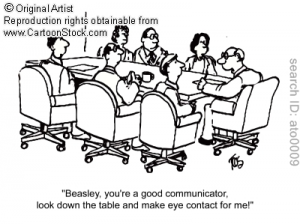Tips for Parenting an Asperger’s Child
In 1944, pediatrician Hans Asperger noted the classic behavior patterns of children with Asperger’s syndrome. These children have different patterns of speech, impaired social skills, and difficulty displaying empathy. However, as one mom of an autistic child points out, this developmental disorder does not mean that the child has a diminished intelligence. A speech-language pathologist (SLP) can help your Asperger’s child develop his speech and language skills. Talk to the SLP about activities that you can do at home to help your child flourish and avoid social isolation.
Your Child’s Environment
Maintain a calm environment for your child whenever possible. When he is less distracted, he might be more able focus on his communication. In particular, children with Asperger’s might be distracted or upset by background noises like a ticking clock. Keep clutter to a minimum and place numerous storage containers in your youngster’s room for his toys. Wall hangings might also be distracting to him. As well, provide your child with a set routine and schedule, along with consistent rules and expectations. When you do at-home speech therapy activities with him, try to schedule it for the same time each day.
Body Language
Eye Contact
Communication skills cover so much more than just spoken and written language. Pay attention to your child’s body language as he talks to people. Children with Asperger’s might not make eye contact. It doesn’t mean that they’re being rude; they’re simply uncomfortable with meeting another person’s gaze. Encourage your child to make eye contact, but do not try to force him to do so. Instead, suggest that he try looking at the person’s forehead or cheeks. He could also try to meet the person’s gaze for a few seconds every so often, or just at the start and end of the conversation. Experiment to determine which method works best for your child.
Body Posture
Your child might also maintain an abnormal body posture during a conversation. Asperger’s children are also typically unable to pick up cues from another person’s body language and facial expressions. For example, a person might start turning away from your child to indicate the end of a conversation, but your child not understand this and he will continue to talk.
Your child might benefit from watching TV to learn about body language. Sit down with him and put on his favorite movie or show. Point out how one actor uses his body language, gestures, and facial expressions to convey meaning. Ask him to guess at what another actor’s body language might mean. Then, practice using nonverbal cues together. For example, make a happy face and then a sad face at your child and ask him what each means.
Pragmatic Language Skills
Your child’s pragmatic language skills refer to his social use of language. Pragmatic language skills include following the rules of language and adapting language to various situations. Nonverbal language, such as eye contact and body posture, are also part of pragmatic language. Children with Asperger’s syndrome typically have trouble understanding and using pragmatic language skills.
Roleplaying with your child can help him learn about various social situations and appropriate responses to build his conversation skills. For example, sit down with your child and tell him that you are pretending to be a classmate at school. Ask your child what he did the previous weekend. Your child might launch into a detailed list of all the minute activities that took place. Help your child learn that the classmate really wants to know about major events, like going to the park, instead of smaller events like brushing one’s teeth. As well, use roleplaying to help your child learn about abstract language. He might not understand that “Let me see the toy,” really means “Let me hold or play with the toy,” for example. You might also consider Use social stories to help children understand the emotions of the characters which are brief descriptions of situations and how a person might respond to them.





